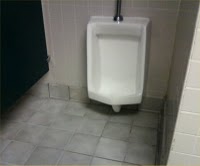When choosing which space is best for a medical practice, physicians can have unique needs when compared to general office tenants. Physicians are oftentimes more specific in where they want to be and can be based on factors such as proximity to their hospital affiliation, distance from competitors and co-tenancy.
Some lease considerations for medical offices include:
- Renewal options
- A use definition that is not too limiting
- Exclusivity against like providers
- Property compliance with the Americans with Disabilities Act
- Extraordinary utility or waste needs
- Assignment flexibility
- Relocation protection
- Surrender/restoration conditions
- Termination by reason of death or disability
- Unnecessary personal guarantees
Doctors also have higher fit-out costs due to extensive plumbing, electrical, millwork, medical/lab equipment, ADA requirements, circulation, medical gas and air, air filtration, filing, soundproofing, etc. Physician office fit outs can incur 50-100% of additional expense. Conventional wisdom is to leave plenty of lead time and factor a minimum of $150-$250 per square foot in construction costs though it may be lower/higher based on design intent.
Below is an aggressive contractor’s build out schedule for a high end 3,000 square foot commercial interior doctor’s office in NYC that included one office, four exam rooms, two treatment rooms, reception, two waiting rooms, nurses station, lab, locker room, anti-microbial flooring, file area and two bathrooms. Construction was done under NYCDOB Directive 14 / ALT-2 permitting.
Construction costs using non-union labor totaled $725,000 excluding Furniture, Fixtures and Equipment (FF&E).
1. Trade Contracts – 12 days
2. Demolition – 6 days
3. Layout – 3 days
4. HVAC Submittals – 2 days
5. HVAC Lead Time – 30 days
6. Shop Drawings/submittals – 10 days
7. Fire Sprinklers Approved Drawings – 5 days
8. HVAC Shop – 5 days
9. Electrical Fixture Package Approvals/Lead – 25 days
10. Door Submittal/Lead – 20 days
11. Waterproofing – 3 days
12. Framing – 7 days
13. Millwork Shop Drawing Approvals – 25 days
14. Core drills – 2 days
15. Drywall one side – 6 days
16. Electrical Rough – 30 days
17. Plumbing Rough – 30 days
18. Low Voltage (IT) Roughing – 4 days
19. Ductwork Install – 7 days
20. Sprinkler Rough – 5 days
21. Tape/Spackle – 10 days
22. Roughing Inspection – 1 day
23. Partition Closing – 4 days
24. Door Frames – 3 days
25. Doors/hardware – 5 days
26. Piping insulation – 1 day
27. Spray Painting Ceiling/Piping – 1 day
28. ACT Grid – 4 days
29. Lighting – 7 days
30. Painting – 10 days
31. Ceramic Tile – 2 days
32. Flooring and Prep – 8 days
33. HVAC Install – 7 days
34. Ceilings – 3 days
35. Millwork Install – 12 days
36. Glass Install – 15 days
37. Designer Ceiling Install – 4 days
38. Finishes – 10 days
39. HVAC Start up / Balancing – 3 days
40. Inspections – 3 days
41. FDNY Inspection
42. Punchlist – 5 days
42.5. Turnover
Building a new healthcare facility, even a relatively small 3,000 sq ft doctor’s office is a complex task and goes way beyond the 42.5 tasks listed. The delivery process involves selecting design and engineering consultants, analyzing program requirements and coordinating program needs during the design process with design professionals, contractors and construction inspectors.
Depending on the procedures performed, medical facilities sometimes must follow stringent construction codes for healthcare and also be certified by the local health department. Even in the age of EMR’s (Electronic Medical Records), issues like paper records storage and conforming to HIPAA regulations must still be addressed. It also requires facilitating a seemless relocation with minimal disruption to the staff and patients.
Physicians should not attempt to oversee the intricacies of design, build and relocation themselves or appoint an inexperienced administrator or staff member. Practitioners have far more demanding needs than trying to project manage a medical build out while simultaneously trying to care for their patients and operate their business.
Hiring a Project Manager ensures that the goals are achieved through proper planning which is crucial to the success of any healthcare facility planning project. They thoroughly understand the complexities of acquiring, developing, constructing and managing every aspect of a healthcare facility. Project Managers are the doctor’s advocate and point person that guides them through every phase – from lease administration through relocation and punch list.
Discover more from Helping NYC & Long Island Commercial Tenants, Owners, and Developers
Subscribe to get the latest posts sent to your email.






I am doing IO&T work now – should use your reply in my presentations! Thanks!!
In addition to the construction portion of the work, there are post-construction activities (called transition, activition or IO&T) that are critical to the success of the overall project. We like to say that construction gets the building ready for the people, the activation work gets the people ready for the building 🙂
IO&T plays a crucial role. I always believe the construction part is easy. The post-construction planning for a healthcare facilities move can be a monumental undertaking. Factors involved can include inspections and code compliance, Commissioning, Air Quality, signage and furnishings, equipment installation including calibration and testing, training, voice, data and security, Move Preparation, Move Coordination and Post Move.
A well developed plan results in effective patient care on the first day of occupancy.
If you think the construction part is easy then you are obviously not involved in the construction process.
Thanks for your comment Jack. As the author of the article, I think it stands on its merits and backs up your point that construction is definitely not easy. But in the context of Cat’s reply, I was just inferring that IO&T, project management and planning for healthcare facilty can be quite challenging when working with end users who don’t understand construction, phasing and the nuances of setting up a healthcare facility. Working with end users who have never been through the process takes a lot of guidance and patience. In that vain, construction itself can appear to be less stressful and easier to manage. But it certainly is not easy as you correctly state.
The retail property has to be protected and strengthened and occupancy in a retail property is critical to property performance in this market.